Manduca rustica rustica
|
|
Updated as per http://biological-diversity.info/sphingidae.htm (Belize), November 2007
Updated as per Fauna Entomologica De Nicarauga, November 2007
Updated as per The Known Sphingidae of Costa Rica, November 2007
Updated as per personal communication with Johan van't Bosch (Mato Grosso, Brazil, September), March 2008
Updated as per Hawkmoths of Argentina, More, Kitching and Coccuci 2005, December 2008
Updated as per personal communication with Andy Warren, (Aloysia virgata in Florida); September 2010
Updated as per French Guiana Sphingidae; March 9, 2011
Updated as per personal communication with Ben Trott (Playa del Carmen, Quintana Roo, Mexico); February 27, 2012
Updated as per personal communication with Alexander Buldring (Avanhandava, Sao Paulo, Brazil, December 18, 2012); January 30, 2013
Updated as per personal communication with Ginny Raska (Manduca rustica, near Brazoria, May 19, 2014); May 20, 2014
Updated as per personal communication with Sergio D. Ríos Díaz in CATÁLOGO DE LOS SPHINGIDAE (INSECTA: LEPIDOPTERA) DEPOSITADOS EN
EL MUSEO NACIONAL DE HISTORIA NATURAL DEL PARAGUAY; sent to me in July 2014 by Sergio D. Ríos Díaz.
Updated as per personal communication with Vadim Kroutov (Peru); March 1, 2015
Updated as per personal communication with Terry Stoddard (El Progresso, Guatemala, June, 117mm); August 15, 2015
Updated as per personal communication with Denny Schreffler (back fifth instar, September 12, 2015, Tucson, Arizona); October 9-13, 2015
Updated as per personal communication with Ezequiel Bustos (Shilap revta. lepid. 43 (172) diciembre, 2015, 615-631 eISSN 2340-4078 ISSN 0300-5267), January 4, 2016
Updated as per personal communication with Francierlem Oliveira (Extremoz, Rio Grande do Norte, Brazil, May 4, 2017); May 18, 2018
Updated as per personal communication with Brenda Wagner (Manduca rustica, Ivins, Washington County, June 3, 2019); June 4, 2019, see Utah page
Updated as per personal communication with Galerita Janus (Manduca rustica, Panama, July, 2016); March 13, 2020
Updated as per personal communication withStephanie Minneti, Richmond, Henrico County, Virginia, July 30-September 10, 2020<; September 10, 2020
|
Manduca rustica rustica
man-DOO-kuhMruh-STICK-kuh
Rustic Sphinx
(Fabricius, 1775) Sphinx
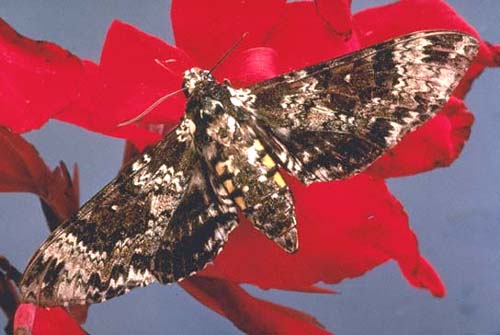
Manduca rustica rustica female courtesy of David Liebman.
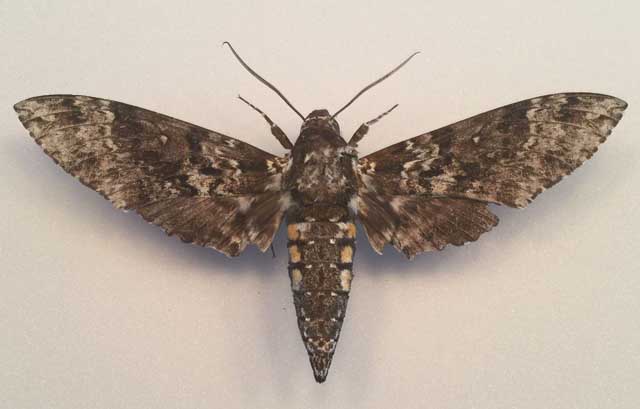
Manduca rustica, 134mm, Mount Totumas, Chiriqui, Panama,
July 16, 2016, 1880m, courtesy of Galerita Janus.
This site has been created by Bill Oehlke.
Comments, suggestions and/or additional information are welcomed by Bill.
TAXONOMY:
Family: Sphingidae, Latreille, 1802
Subfamily: Sphinginae, Latreille, [1802]
Tribe: Sphingini, Latreille, 1802
Genus: Manduca Hubner, [1807] ...........
Species: rustica rustica (Fabricius, 1775)
|
DISTRIBUTION:
The Rustic Sphinx, Manduca rustica
rustica (Wing span: 3 7/16 - 5 15/16 inches (8.7 - 15 cm)),
flies in warm temperate, subtropical, and tropical forests and second
growth woodlands from Virginia to south Florida,
west to Arkansas, Texas, southern New Mexico, Arizona, Utah (BW) and southern
California and Puerto Rico and Cuba, and then further south through
Central America to Peru (VK);
Brazil: Paraiba (AvB); Mato Grosso
(JvB); Para; Roraima; Rio grande do Norte (FO);
Bolivia;
Paraguay: Concepcion; Guaira; Canindeyu; Itapua; Amambay; Presidente Hayes; and
Uruguay.
There are valid reports from the provinces of Argentina: Buenos Aires, Cordoba, Corrientes, Chaco,
Entre Rios, Formosa, Jujuy, Misiones, Salta, Santiago del Estero, Tucuman.
Visit Manduca rustica, Cordoba, Argentina, courtesy of Dr. Carlos Marzano.
Visit Manduca rustica, Osununu Private Reserve, Misiones, Argentina, October 14, 2009, courtesy of
Ezequiel Bustos.
Visit Manduca rustica, Shreveport, Caddo Parish, Louisiana, July 31, 2013, Jeff Trahan.
Visit Manduca rustica, Laguna Madre, Flour Bluff, Corpus Christi, Texas, August 13, 2013, Tim Belde.
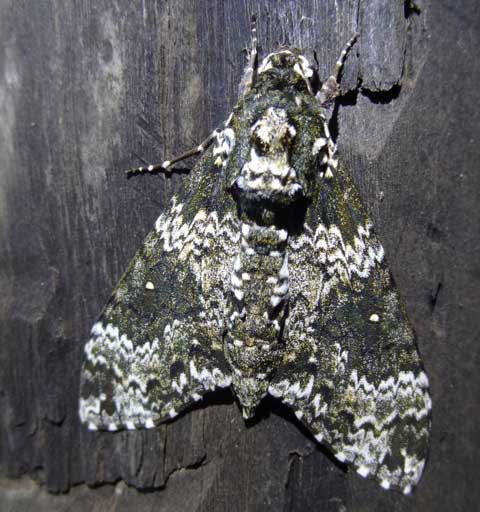
Manduca rustica, Avanhandava, Sao Paulo, Brazil,
December 18, 2012, courtesy of Alexander Buldring.
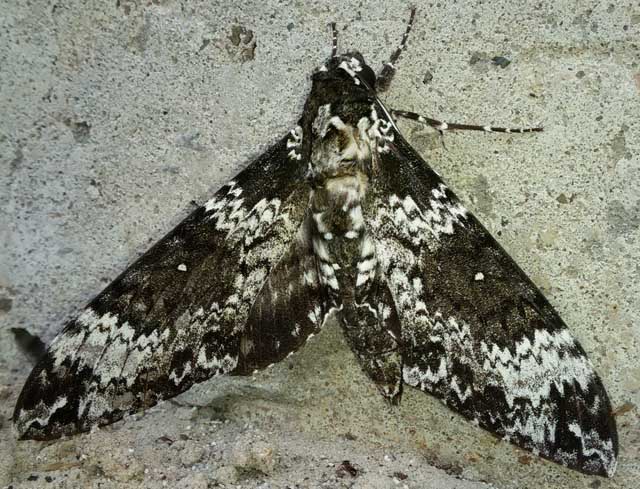
Manduca rustica, Alvin, Brazoria County, Texas,
September 6, 2018, courtesy of Brian Starr.
Visit Manduca rustica larva on privet, pupa, adult, Dos de Mayo, Misiones, Argentina,
April 4 (adult), 2011, courtesy of
Reinhard Foerster.
Leticia Noli Stoner sends this image, February 5, 2011, from Mendoza, Argentina. If the id is correct, this sighting represents a slight southwesterly extension of its
known range in Argentina.
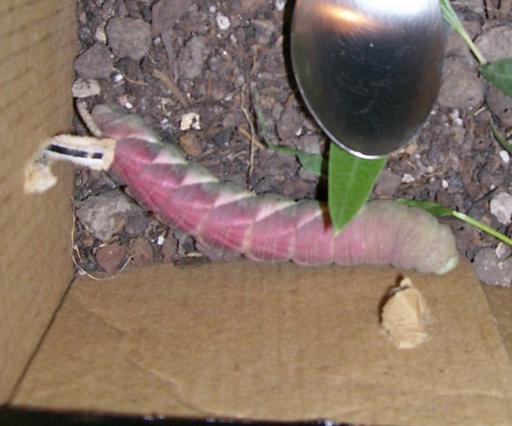
Manduca rustica fifth instar, Mendoza, Argentina,
February 5, 2011, Leticia Noli Stoner
This species occasionally strays to Maine, Massachusetts, and New York. I never saw one in New Jersey.
In Central America it has been reported in the following locations:
Mexico: Quintana Roo; probably throughout Mexico;
Belize: Corozol, Cayo, Stann Creek, Toledo;
Nicaragua: Chinandega, Leon, Managua,
Masaya, Granada, Rivas, Chontales, Zelaya, Rio San Juan;
Guatemala: Izabal (JM)
Costa Rica: Guanacaste, Puntarenas, Alajuela,
San Jose, Lemon, Heredia;
Panama. It is also confirmed in French Guiana: Kaw, and it probably flies throughout most, if not all of
South America.
The abdomen of the adult moth has three pairs of yellow spots. The upperside of the forewing is yellowish brown to
deep chocolate brown with a dusting of white scales and zigzagged black and white lines.
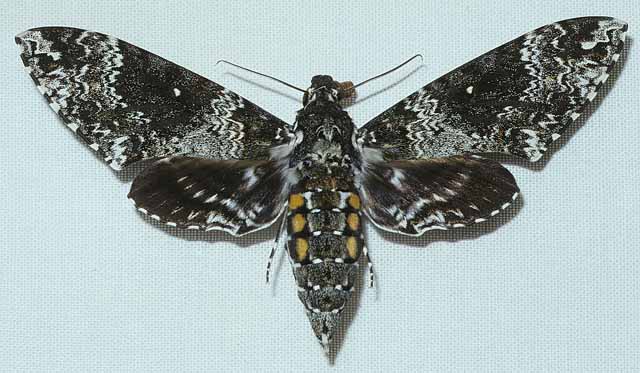
Manduca rustica female,
courtesy of Hubert Mayer.
FLIGHT TIMES:
Manduca rustica rustica adults fly as several broods from May-October
in Louisiana. There are two broods from July-November in the rest of the northern range. In Costa Rica moths have been seen
every month of the year with the biggest flight in May June.
In Bolivia January-February-March-April, June, October and December with both males and females coming to lights. Johan van't Bosch reports
a September flight in Mato Grosso, Brazil.
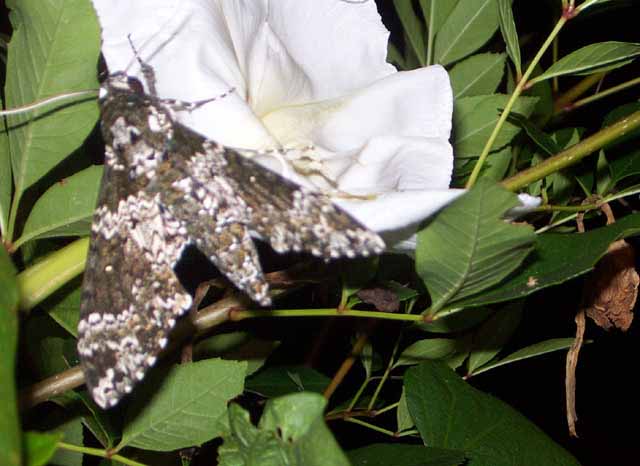
Manduca rustica, on moonflower, San Antonio, Texas,
November 12, 2003, courtesy of Jay Chapman.
Terry Stoddard reports a June flight in El Progresso, Guatemala.
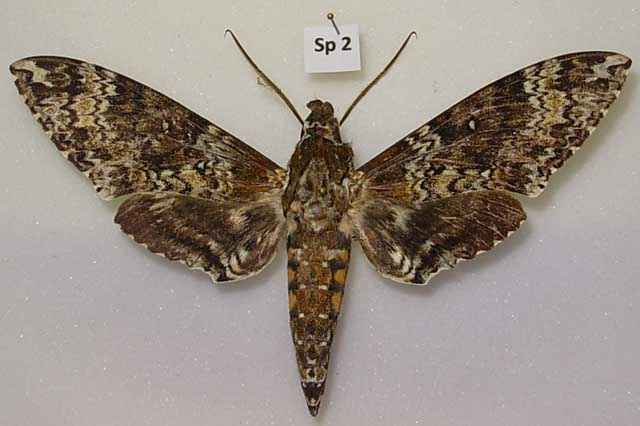
Manduca rustica, Hacienda La Vega, 10km N El Rancho Jct, El Progresso, Guatemala,
June 11, 2015, 300m, 117mm, courtesy of Terry Stoddard.
Visit Manduca rustica, south Austin, August 2, 2012, Jackson MacLean
ECLOSION:
Pupae probably wiggle to surface from subterranean chambers just prior to eclosion.
Stephanie Minneti found a mature larva in Richmond, Henrico County, Virginia, July 30, 2020. She reports that it went underground, August 2, and then emerged
September 8, 2020 as the following moth.
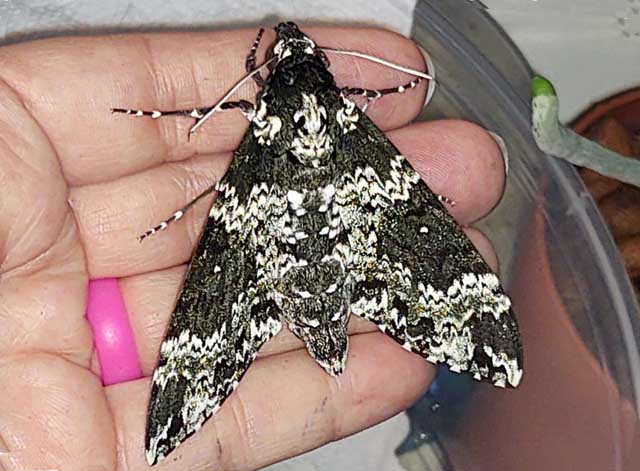
Manduca rustica Richmond, Henrico County, Virginia,
eclosion, September 8, 2020, courtesy of Stephanie Minneti.
Stephanie unearthed the larva before it had pupated in a root filled plant pot. Pupation followed a few days later in a plastic tub which was stored indoors.
The moth emerged thirty-fours days after pupation at room temperature. Development probably would have proceeded more quickly outdoors with warmer temperatures,
but it is very nice to know how long development took at room temperature.
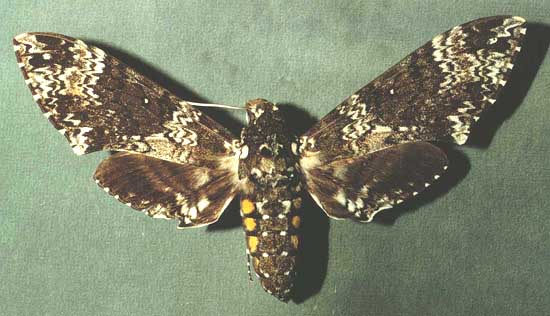
Manduca rustica rustica female courtesy of Dan Janzen.
SCENTING AND MATING:
Females call in the males with a pheromone released from a gland at the tip of
the abdomen. Adults begin feeding from deep-throated flowers including moonflower (Calonyction aculeatum)
and petunia (Petunia species) late at night, around 10 P.M.
EGGS, LARVAE, PUPAE:
Larvae feed on fringe tree (Chionanthus virginicus) and jasmine
(Jasminum species) in the olive family (Oleaceae), and on bushy matgrass (Lippia alba) and Aloysia wrightii
in the vervain family (Verbenaceae), and on knockaway (Ehretia anacua) in the borage family (Boraginaceae),
and on Bignonia species like Desert willow (Chilopsis linearis) in the Bignoniaceae family.
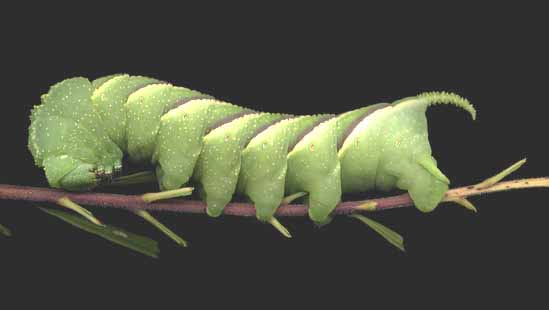
"Manduca rustica, Tucson, Arizona, November, on desert willow, David Bygott
Larvae have also been reported on Tecoma stans, Callicarpa americana,
Fraxinus, Helianthus annuus, Heliotropium, Lagerstroemia indica,
Lantana camara, Ligustrum japonicum, Ligustrum ovalifolium, Plumeria acuminata,
Plumeria alba, Ligustrum vulgare, Sesamum indicum, Syringa vulgaris,
Trichostema dichotomum, Annona squamosa, Gossypium herbaceum and
Himatanthus sucuuba.
I recently received a report and images of a larva feeding on basil in Palm Beach County, Florida, September 4, 2010.
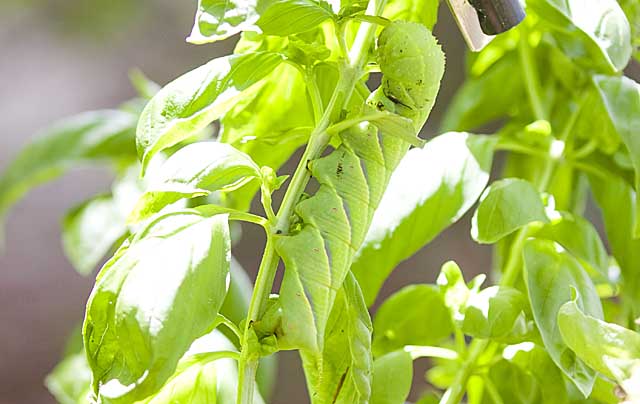
Manduca rustica fifth instar on basil, Palm Beach County, Florida,
September 5, 2010, courtesy of Jenny Yates.
Jenny Yates writes, "There is another basil plant about 8 feet away and it has been stripped pretty much bare. We have mulch and a plethora of lizards,
and I didn't notice/see any caterpillar droppings. Also nearby are two rosemary plants, a parsley plant, and formerly some lettuce
(I think the lettuce were done for before the caterpillar would have entered the scene). Additionally, there is a hedge row of some plant I don't
know and some palm trees. The basil is the only one that seems to have damage."
I was surprised when Jenny indicated the Manduca rustica larva depicted above was found feeding on basil and I asked Jenny to check
to see if much foliage had been consumed. I will now add basil to the Manduca rustica species file as a foodplant for that species.
Andy Warren writes, "Aloysia virgata (Sweet Almond Bush, Incense Bush of Verbenaceae family)
is a popular nectar plant in butterfly gardens in Florida.
(I think it is originally a South American plant). Anyway, I just found a
last instar larva of Manduca rustica on one of my A. virgata plants, after
the sucker defoliated a couple of branches!"
Visit Manduca rustica fifth instar on Callicarpa?, Playa del Carmen, Quintana Roo, Mexico,
March 4, 2012, courtesy of Ben Trott.
Visit Manduca rustica, Long Key Nature Center, Broward County, Florida, May 2, 2011, Kelli Whitney.
Visit Manduca rustica on Stachytarpheta jamiacensis (porterweed), North Miami Beach, Miami Dade County,
Florida, August 11, 2016, courtesy of Kevin.
Visit Manduca rustica,
Dog Canyon, Otero County, New Mexico, on Desert Willow, (Chilopsis linearis), August 24, 2009, Bob Barber.
Visit Manduca rustica fifth instar, Chandler,
Maricopa County, Arizona, October 8, 2009, courtesy of T. J. Robb.
Visit Manduca rustica larvae on golden dewdrop (Duranta erecta), Cape Coral,
October 9, 2010, Elizabeth Gillen.
Visit Manduca rustica, Tucson, Pima County, Arizona, August 25, 2011,
feeding on Tecoma Orange Jubilee Trumpet and Cape Honeysuckle bushes, about 2500' above sea level, Sue Fehlman.
Visit Manduca rustica fifth instar on Desert Willow, Tucson, Pima County, Arizona,
September 17, 2011, 100mm, Karen Riggs.
Visit Manduca rustica larva, Columbia County, Georgia, courtesy of Bob and Marsha Hamlin.
Visit Manduca rustica rustica larva and adult, Extremoz, Rio Grande do Norte, Brazil, 2015, 2017, Francierlem Oliveira.
Many thanks to Ann Baines who sends the following image and report (foodplants and location):
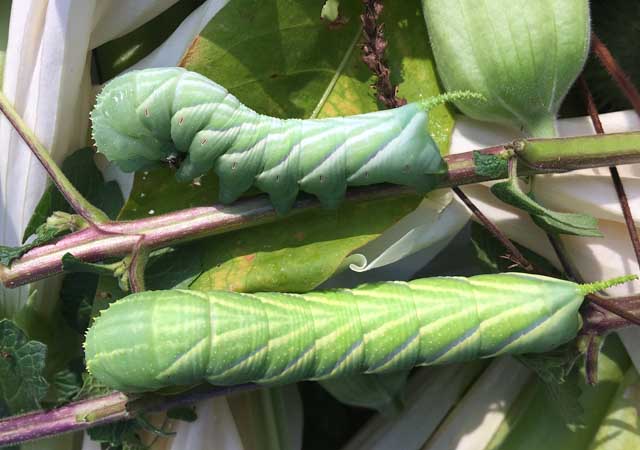
Manduca rustica final instars on Ceratotheca and Datura,
Kennett Square, Chester County, Pennsylvania, August 27, 2019, courtesy of Ann Baines.
The caterpillar has numerous white nodules on top of the thorax and seven pairs of oblique, blue-gray stripes (sometimes very pronounced, sometimes more subdued)
along the side of the body. The horn is mostly green, white at the base and blue-gray at the tip. Host plants also include Crossvine,
bignonias, and various members of the forget-me-not and vervain
families. Alice Gilliland reports one feeding on gardenia in Chapel Hill,
Orange County, North Carolina.
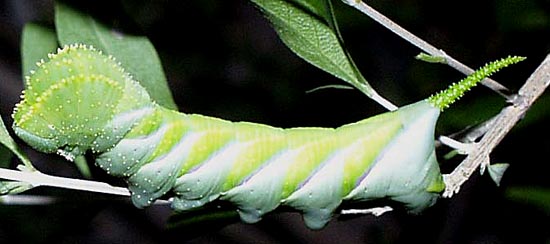
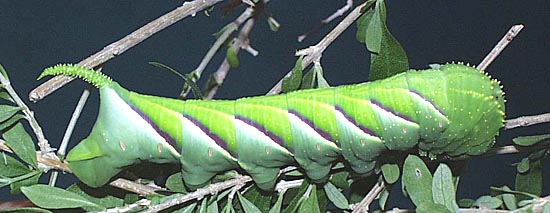
Larvae pupate on their backs in subterranean chambers. Larvae and
pupa images courtesy of Bruce Walsh. |
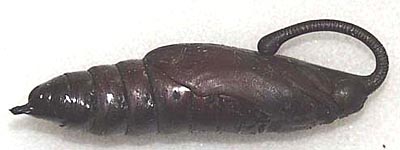 |
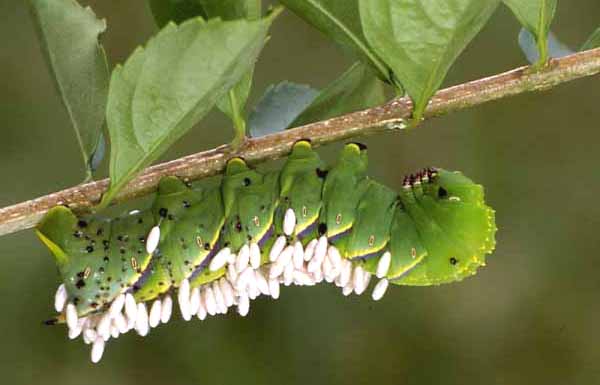
Heavily parasitized Manduca rustica, Florida,
courtesy of Leroy Simon.
Occasionally an almost black form of the larva is encountered.
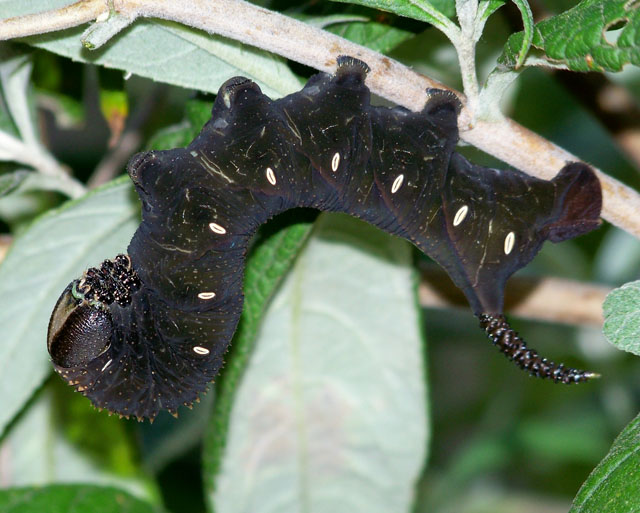
Manduca rustica, dark (unusual) fifth instar, Patagonia, Santa Cruz Co., Arizona,
on buddleia bush, September 20, 2008, courtesy of Philip Kline.
I received another report of a black larva from Gary Vernon in Midlothian, Texas. Gary reports that it was also feeding on butterfly plant.
Perhaps there is a correlation between host plant and likelihood of the appearance of the dark form.
Denny Schreffler sends the following image from Tucson, Arizona, taken September 12, 2015.
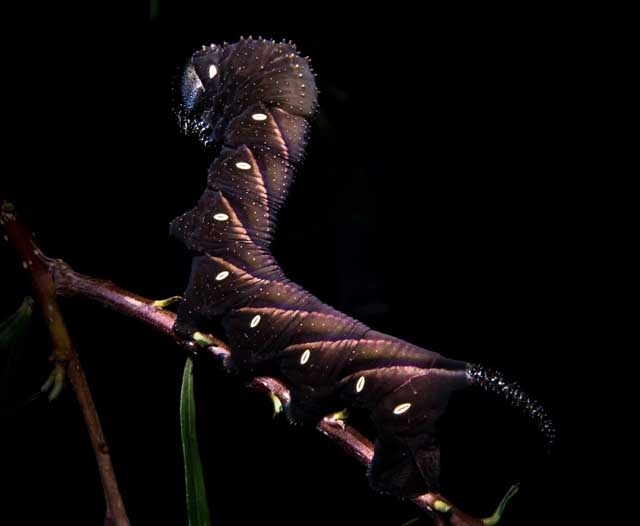
Manduca rustica fifth instar, Tucson, Arizona,
September 12, 2015, courtesy of Denny Schreffler.
Visit additional Manduca rustica, larval images (black and green forms), Tucson, Arizona,
October 12, 2015, courtesy of Denny Schreffler.
Use your browser "Back" button to return to the previous page.
Return to Sphingidae Index
Return to Sphingini Tribe
Use your browser "Back" button to return to the previous page.
This page is brought to you by Bill Oehlke and the
WLSS. Pages are on space rented from Bizland. If you would like
to become a "Patron of the Sphingidae Site", contact Bill.
Please send sightings/images to Bill. I will do my best to respond to requests for identification help.
Enjoy one of nature's wonderments: Live Saturniidae (Giant Silkmoth) cocoons.
 | 
Show appreciation for this site by clicking on flashing butterfly to the left.
The link will take you to a page with links to many insect sites. |




















